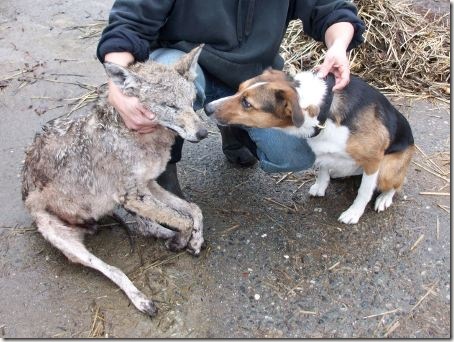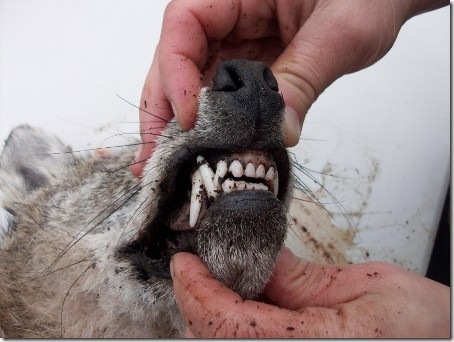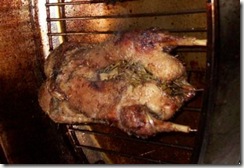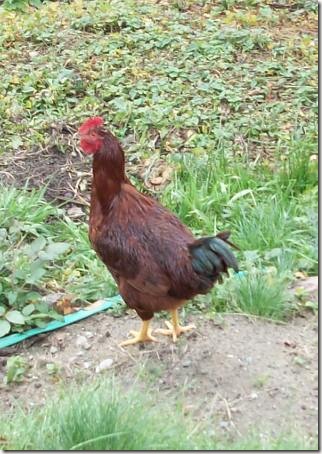 I had put a batch of chicken eggs into our Little Giant foam incubator, mostly as an experiment to see if chickens would render a higher yield than ducks do in that incubator. And, indeed they do!
I had put a batch of chicken eggs into our Little Giant foam incubator, mostly as an experiment to see if chickens would render a higher yield than ducks do in that incubator. And, indeed they do!
Category: Poultry
Country Living Expo & Cattlemen’s Winterschool
 Here is a plug for an upcoming event in Stanwood, WA that should be well worth attending. WSU’s Country Living Expo and Cattlemen’s Winterschool is an amazing array of 135 classes on all sorts of topics,a jam-packed day of learning, plus a prime rib lunch. The hardest part is choosing which classes to attend! 😛
Here is a plug for an upcoming event in Stanwood, WA that should be well worth attending. WSU’s Country Living Expo and Cattlemen’s Winterschool is an amazing array of 135 classes on all sorts of topics,a jam-packed day of learning, plus a prime rib lunch. The hardest part is choosing which classes to attend! 😛
Here is a sampling of some of the topics:
Fruit Tree Maintenance, Hands on Hay judging, Frisbee Dog Training, Growing Giant Pumpkins and Vegetables, Building Your Own Greenhouse, Native Plants for Wetland Restoration, Arc Welding- Hands on, Soap Making, Cheese Making, Growing Vegetables Year Around, Wild Game Dressing in the Field, Raising and Processing Pastured Poultry, Palatability Control Points for Direct Marketed beef, pork and lamb, Plethora of Pasture and Forage Classes, Chain Saw Maintenance, Beginning through Advanced Specialty Canning, Frisbee Dog Training, Marketing Small Businesses, Cider Making, Honey Bees, Raising Beef, Sheep, Swine, Goats, Spinning, Weaving, equine classes and more.
How can you resist? Get yourself over to the Skagit County Extension website and register asap, as I understand the classes fill fast.
New Ducklings
The “emergency replacement batch” of ducklings hatched this weekend. Three silvers, one blue, and one black. I think three of them are purebred Magpies. I’d like to get back to having a purebred flock, so that’s good.
Broken Coyote Jaw
We boiled the skull of the coyote that Kirk shot, and were surprised to have the bottom jaw come out in three pieces. It was broken clean through, with a large, shattering injury to the lower right jaw, under and behind the last tooth. Huh, I thought, did Kirk shoot him there? I didn’t think so. I knew he had gotten a good, lethal shot to the chest.
Looking back at the photos, his face showed no outward signs of injury. [Somewhat graphic pictures below, click for more if you’d like to view them and read the rest of the story.]
Coyote Skinning
 I’ve talked several times before about our coyote predation problems, and our attempt to manage coyotes partly by attempting to teach them to stay out of the yard and livestock areas, and using removal as a final option. We’ve had reasonable luck this year with shooting at them and (intentionally) missing, and having that be enough of a deterrent to keep them at a distance. But, for the ones that do keep returning and not responding to our “training” methods, eventually, we’re not going to miss! So that is what happened last week, we had one that kept lurking, boldly continuing to snag poultry from the yard, and Kirk finally got him. We don’t like to take them out, but if they are constantly killing livestock and do not respond to training, they have to go.
I’ve talked several times before about our coyote predation problems, and our attempt to manage coyotes partly by attempting to teach them to stay out of the yard and livestock areas, and using removal as a final option. We’ve had reasonable luck this year with shooting at them and (intentionally) missing, and having that be enough of a deterrent to keep them at a distance. But, for the ones that do keep returning and not responding to our “training” methods, eventually, we’re not going to miss! So that is what happened last week, we had one that kept lurking, boldly continuing to snag poultry from the yard, and Kirk finally got him. We don’t like to take them out, but if they are constantly killing livestock and do not respond to training, they have to go.
This was while I was out of town in Pullman, and Kirk called with the news. He ended up putting the coyote in the freezer to wait until I got home. It fit neatly into the empty above-the-fridge freezer that we’d recently replaced with our new French door fridge. So, we had a frozen coyote in the kitchen. 🙂 Before that though, he weighed the coyote and all the dogs. You see, we always get a kick out of people expressing great fear of coyotes, and amazement that we chase them, because they are really little dogs. Littler than our dogs. And they’re pretty chicken; they are no fools, they don’t take on something that might injure them if they don’t have to. And that was the case with this fellow, as you can see from the photo above, he’s a petite little canine, just about the same size as Maggie. Here’s how they weighed in:
Coyote: 33.5 pounds
Maggie: 42 pounds
Gene: 36 pounds
Spanky: 48 pounds
We thawed him out this weekend for processing. This coyote was actually not in good health, and his skin and tail were very mange-ey and he had some bald patches. He may not have made it through the winter on his own, and was probably targeting our poultry out of desperation for something easy enough for his unhealthy body to catch. Despite the patchy appearance, we thought it would be good practice to skin it, and once the hide was off, it looked OK. So for fun we’ll tan it for a wall-hanger, even though it’s not a fancy fur.
I’m not sure how to judge wild dog teeth for age estimation, but if this were a domestic dog, I would estimate 5-7 years old, based on the wear of the “scallops” off of the front incisors. This may be somewhat “elderly” for a coyote? They may wear their teeth faster than dogs though, so maybe he’s not quite that old. But definitely a mature male. It’s interesting to see how much longer and larger their teeth are compared to domestic dogs, definitely still designed for hunting, not kibble eating!

Below is how we skinned it. Warning: graphic pictures ensue, so only read on if you’re up for it! This post is in no way meant to disrespect nature or glorify killing, but to acknowledge that sometimes predators have to be killed, when they are making a habit of eating livestock and do not respond to gentler control attempts. When you do have to harvest one, you might as well make good use of the hide, and recycle the rest back to nature, so nothing is wasted. And learn some anatomy too. So, here’s how it’s done, or one way to go about it.
New Roo
Out of the 21 Rhode Island Red hatchery pullets I bought last spring, I was hoping one might turn out to be a mistaken rooster. And these ladies are so assertive that more than once I thought I did have a rooster, with the way they spar, and mount each other! But, I finally decided it wasn’t the case- I have sixteen hens left, and no sire amongst them. So, I have been on a quest for a RIR roo!
Candling Duck Eggs
 After our small coyote duck massacre, I came to realize I have no drakes left. I had winnowed down to two drakes, because too many aggressive breeders are hard on the ladies. Both of them came up missing. I want to always have fertilized eggs so I can breed more ducks from time to time, so a new boy duck is needed. If necessary, I’ll buy one. But for now, I stuck some eggs in the incubator in hopes that I might hatch a male for free. It would be good to increase the flock a little too, I like to keep at least a dozen ducks for laying.
After our small coyote duck massacre, I came to realize I have no drakes left. I had winnowed down to two drakes, because too many aggressive breeders are hard on the ladies. Both of them came up missing. I want to always have fertilized eggs so I can breed more ducks from time to time, so a new boy duck is needed. If necessary, I’ll buy one. But for now, I stuck some eggs in the incubator in hopes that I might hatch a male for free. It would be good to increase the flock a little too, I like to keep at least a dozen ducks for laying.
Hillbilly Dinner: The Coyote’s Leftovers
 Sunday we had a coyote attack on our ducks, after going all summer without losing any. Usually a coyote will just take one duck and make off with it. But this time, it was a major fray, in the middle of the day. We had fourteen ducks, and I think this little doggy managed to bite every single one of them! It was either a group of coyotes (though Kirk only saw one streak across the driveway when he went outside) or a young pup that got carried away with enthusiasm and unskilled efforts at dispatching birds!
Sunday we had a coyote attack on our ducks, after going all summer without losing any. Usually a coyote will just take one duck and make off with it. But this time, it was a major fray, in the middle of the day. We had fourteen ducks, and I think this little doggy managed to bite every single one of them! It was either a group of coyotes (though Kirk only saw one streak across the driveway when he went outside) or a young pup that got carried away with enthusiasm and unskilled efforts at dispatching birds!
Three ducks are outright missing (sewn-up duck is one of them, I am sad!). I found two freshly dead, and another died later from apparent internal injuries. So, we are down to eight from fourteen, in one incident! Ouch! I’m not certain we have a boy left in the group either, uh oh!
The two freshly killed ones I decided we could eat, they were still warm when we found them, and I had time, so I butchered them up! A hillbilly would never let a coyote’s leftovers go to waste, after all! 😉
What I Learned At Summer Camp
 Well, not summer camp exactly. But I just got back from a four-day trip to Corvallis, OR to attend the Katahdin Hair Sheep International Expo and Sale. I really enjoyed it, they had great farm tours, speakers, and a sheep sale. I bought a few sheep too! I’ll try to write about the highlights, as best as I can capture all that I absorbed there.
Well, not summer camp exactly. But I just got back from a four-day trip to Corvallis, OR to attend the Katahdin Hair Sheep International Expo and Sale. I really enjoyed it, they had great farm tours, speakers, and a sheep sale. I bought a few sheep too! I’ll try to write about the highlights, as best as I can capture all that I absorbed there.
Sneaky Nesting Duck’s Babies
Sneaky Nesting Duck reappeared from her broody nest on Friday August 28th, right on time, 28 days after I’d first noticed her staying out all night. She successfully hatched four ducklings; out of, I think, eleven eggs. So though her overall percentage is better than the incubator, it’s still not great, and not as economical as using the incubator to produce ducklings. Continue reading “Sneaky Nesting Duck’s Babies”



